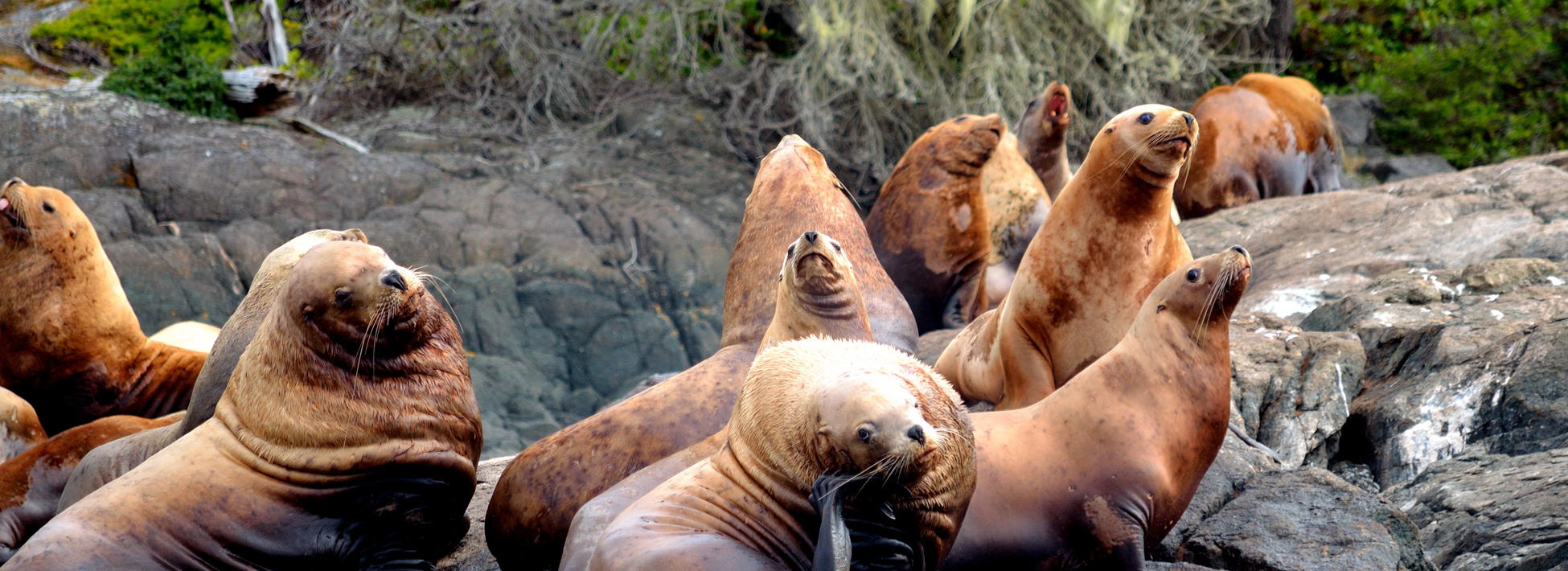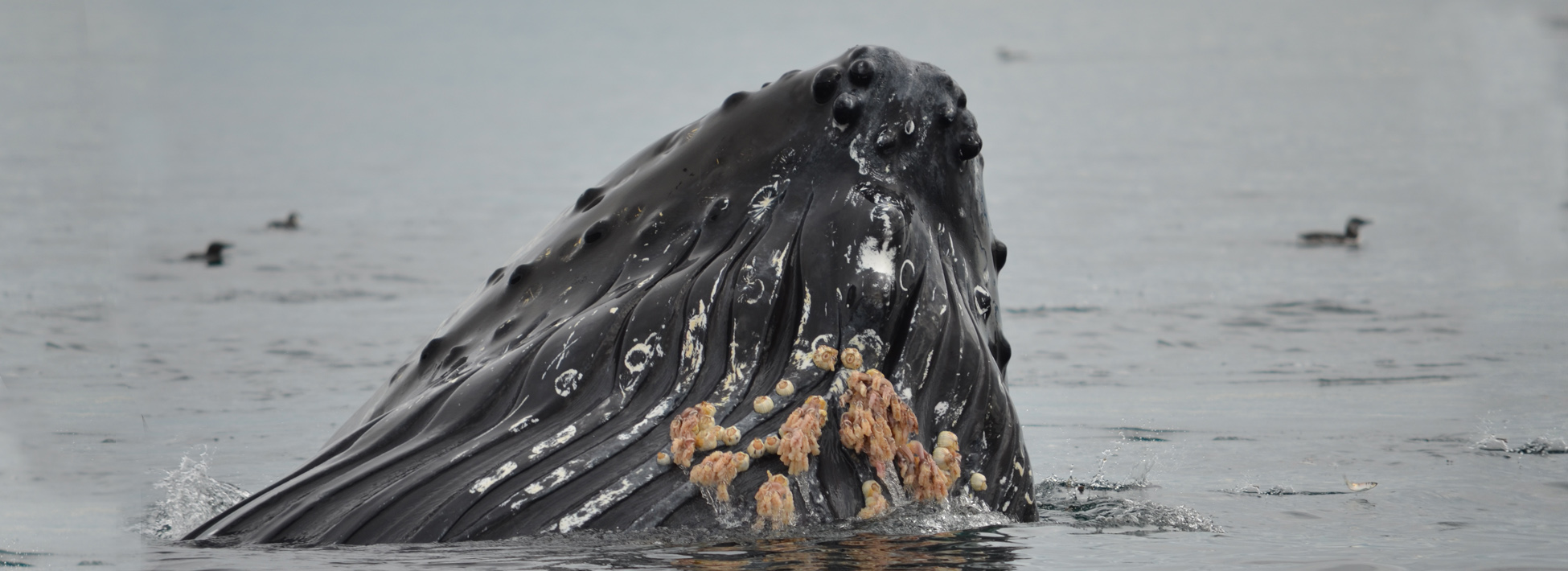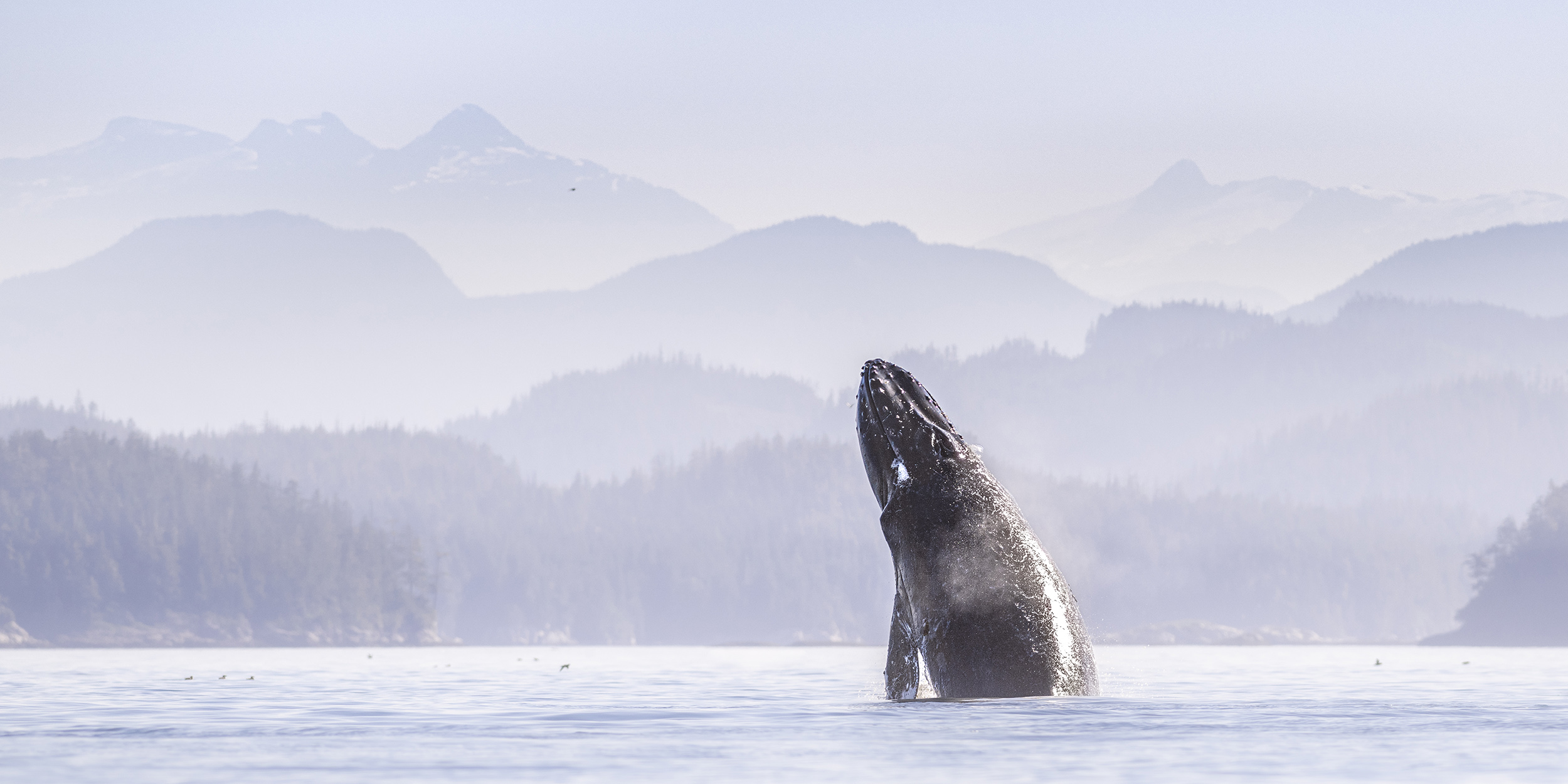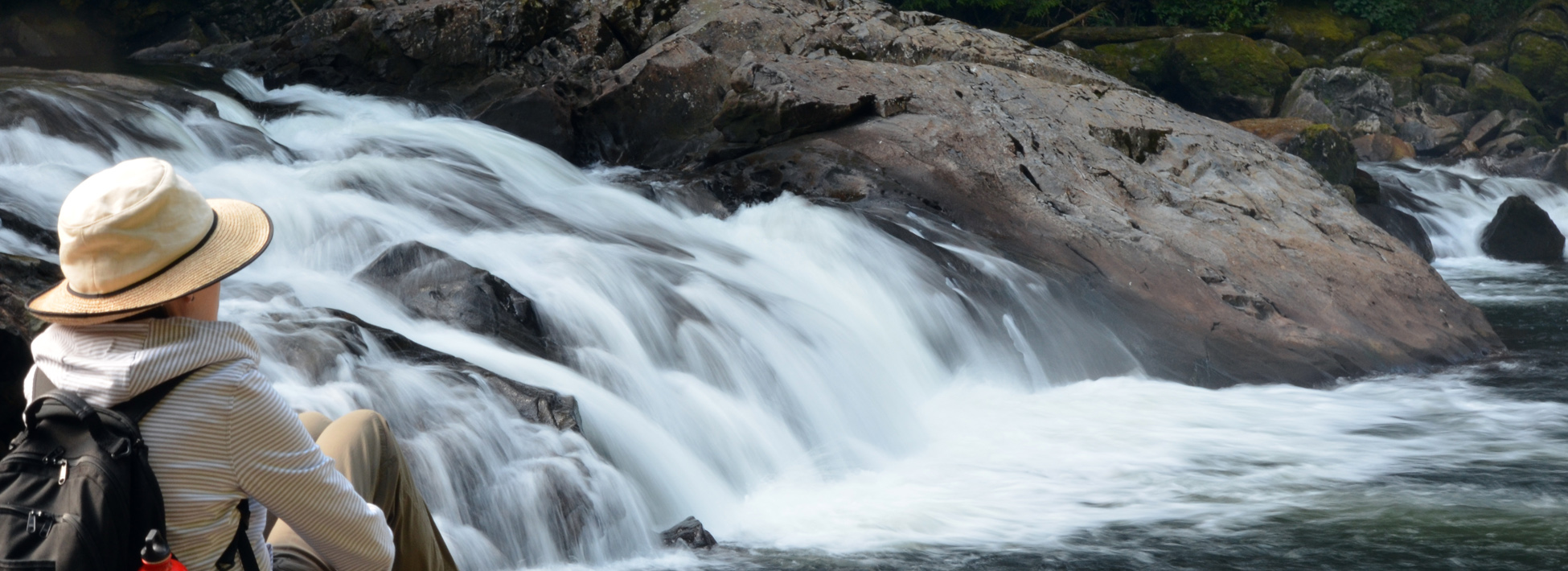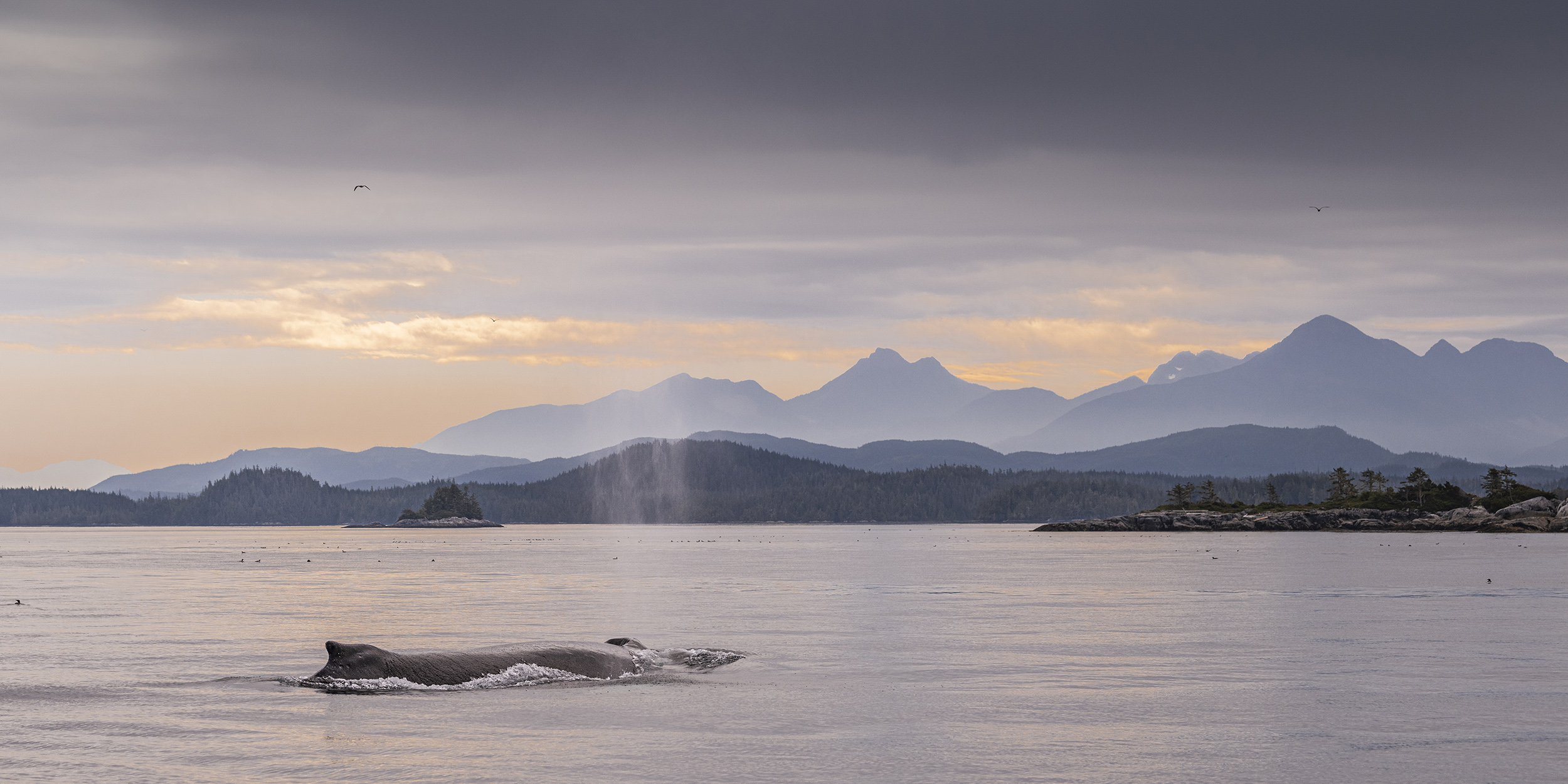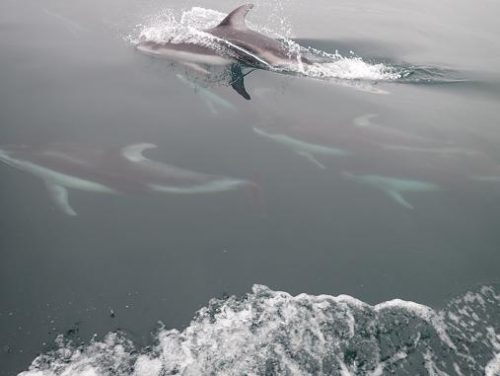 Pacific white-sided dolphins are found continuously throughout the north Pacific. In British Columbia, it is estimated that approximately 25,000 Pacific white-sided dolphins reside along our coast. These dolphins are opportunistic predators feeding on over 60 species of fish and 20 species of cephalopods. In BC, they feed on at least 13 different prey species, including salmon, herring, Pollock, shrimp, sablefish, smelt, and squid. They forage cooperatively, though large groups may separate into smaller sub-groups for foraging purposes. These feeding groups have been observed corralling and herding fish in a coordinated fashion. They are covered by the “Whales Watching Guidelines” in that we are required to keep back 100 meters (yards) while viewing, however they do not appear to read these guidelines and always want to play with the boat.
Pacific white-sided dolphins are found continuously throughout the north Pacific. In British Columbia, it is estimated that approximately 25,000 Pacific white-sided dolphins reside along our coast. These dolphins are opportunistic predators feeding on over 60 species of fish and 20 species of cephalopods. In BC, they feed on at least 13 different prey species, including salmon, herring, Pollock, shrimp, sablefish, smelt, and squid. They forage cooperatively, though large groups may separate into smaller sub-groups for foraging purposes. These feeding groups have been observed corralling and herding fish in a coordinated fashion. They are covered by the “Whales Watching Guidelines” in that we are required to keep back 100 meters (yards) while viewing, however they do not appear to read these guidelines and always want to play with the boat.
Bald Eagles

Bald Eagles are frequently sighted in our area. At times they can be seen in large numbers. This is usually where food supplies are high. For example this could be in areas with high concentrations of baitfish or along the rivers in the fall when the salmon are spawning. They are not migratory, but do move around with the food supply. As mentioned earlier when the salmon are spawning we often see many along the rivers, while there will be fewer along the coastline. With little need for camouflage their white head and tail feathers can be spotted easily. The female is slightly larger and her white head extends down a bit farther onto the body, but it is subtle. It takes these birds 4.5 – 5 years to acquire this unique plumage. As juveniles they are a brown colour. With exceptional eyesight and the ability to view 270 degrees they are understandably often seen in high perches and in trees near points and passageways.
Visit our Blog